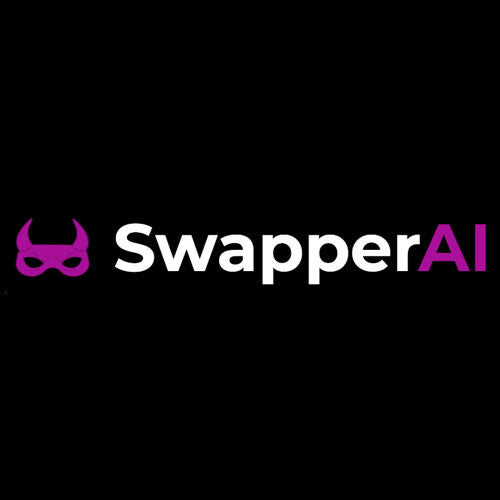Collection: AI NSFW Deepfake
AI NSFW deepfakes are the ultimate choice when it comes to manifesting your deepest fantasies, with visuals so authentic it's hard to tell the difference between these generated images and the real thing. We take a look at how these tools work, how to get the most benefits from them, and how not to land yourself legal hot water with these AI tools.

Top NSFW Deepfake AI Tools
-
Porn Works AI
Vendor:Pornworks.comRegular price $2.39Regular priceUnit price / perA gift from NSFWtools - Grab a Mega Discount + 200 Free Tokens
-
Promptchan AI
Vendor:Promptchan.comRegular price $4.99Regular priceUnit price / per -
Clothoff.net
Vendor:Clothoff.netRegular price $2.00Regular priceUnit price / per -
BestFaceSwap
Vendor:Bestfaceswap.netRegular price $4.16Regular priceUnit price / per -
Ineedthis.ai
Vendor:Ineedthis.aiRegular price $7.99Regular priceUnit price / per -
Drawnudes.io
Vendor:Drawnude.comRegular price $2.00Regular priceUnit price / per -
FaceSwapLab
Vendor:Faceswaplab.comRegular price $4.17Regular priceUnit price / per -
Only IA Fakes
Vendor:Onlyiafakes.comRegular price $2.46Regular priceUnit price / per
Deepfake AI Enters Adult Entertainment Industry
-
Advanced Face-Swapping
With Deepfake tools, you can create ultra-realistic human facial features and expressions that are almost impossible to differentiate from reality. This is due to their sophisticated algorithms and deep learning capabilities.
-
Customization Options for Content
Users can personalize deepfakes by adjusting facial details, lighting, clothing, body types, and even video dynamics to make the output more specific to what the user had in mind. It can take fantasies from your imagination and turn them into visual content that has completely human qualities.
-
Realistic Voice Synthesis
A truly realistic sexual experience contains authentic visual and audio effects. The best tools also use deep machine learning to synthesize human voices, and you can upload audio snippets to mimic the exact voice you need.
Overview
AI deepfakes are a great introduction to the adult entertainment industry. They allow users to easily manipulate images and videos and replace the likeness of one person with another. Even their voice can be replicated and tweaked to deliver the dialogues that are part of your fantasies.
This means that you can now create your ultimate sexual fantasies with celebrities, pornstars, or anyone for that matter in shockingly great details. The practical applications for these tools are just mind-blowing, and it is almost scary how believable the generated outputs have become in such a short space of time.
What is even more amazing is that these do not require any knowledge of photo or video editing. Most of them are quite intuitive and user-friendly. Even beginners can create polished and premium content that blurs the lines between reality and fantasy. All you need to do is enter a few basic prompts upload the relevant reference files, and the erotic scenes of your dreams can finally become a reality.
While these tools are generally viewed with negative connotations, they have powerful, real-world applications. In the entertainment industry, they have been used to improve visual storytelling and virtual reality characters and environments.
How It Works
The technology behind deepfake AI is quite amazing. These tools use a method called deep swapping, which allows users to swap faces seamlessly without any harsh or unsightly errors. This results in outputs such as images or videos that are almost indistinguishable from the original content.
AI deepfakes use a combination of advanced algorithms, deep learning, and large data sets. One of the most crucial components is Generative Adversarial Networks (GANs), which help the AI train and learn from realistic human features and movements.
The first step is data collection, and here, the user provides footage, such as videos and photos, of the person to be replaced and the target body. You can also instruct the AI to find this content on the web. This will give the AI all the information it needs to create a realistic replica.
The next step involves training the AI. In this part of the process, the GANs study facial geometry, voice patterns, and subtle expressions and use this information to ‘teach’ the AI how to recreate all of these specific and subtle elements with precise accuracy.
The most important step is the face-swapping step, where the AI overlays a person’s likeness onto the base content. Once this is done, you can tweak the lighting, angles, and proportions for a flawless output.
These steps might seem complicated, but there is no need to fret. As a user, you can expect all these automated steps to be completed in seconds with little effort.
Advanced platforms optimize these steps using automated tools. Many apps now provide easy interfaces where users input the original files and select desired specifications to generate the final result quickly.
Main Attractions and Features
We don’t think that you will need much convincing to use these deepfake AI tools, but just in case, here is a section dedicated to their advanced features and capabilities.
- Hyper-Realistic Outputs: Deepfake tools excel in creating highly accurate face swaps. These are so convincing that even experts struggle to tell the real from the fake. This is because this technology can now simulate facial micro-movements, including blinking and nuanced emotional expressions.
- User Customization: Many platforms allow users to tweak lighting, refine skin tone, and even manipulate facial angles to produce high-resolution images that meet your specific needs and preferences.
- Mobile Accessibility: Despite being powerful enough to create professional images, these apps do not need to be run on high-RAM PCs. They can now even function on mobile smartphones.
- Fast Rendering Speeds: These AI-powered tools use automated systems to streamline the entire process, producing outputs in seconds with just a few prompts.
Future Trends in AI NSFW Deepfake
As everyone knows, AI deepfake technology has already pushed the limits of what we thought was possible in an extremely short amount of time. Its upward trajectory is only expected to grow more exponentially in the future. With such rapid development, it is really tough to say where the future will take us, but we do have a few ideas.
As VR and AR evolve, you can expect greater integration with these technologies and deepfakes. There is also a growing market for using VR to interact with haptic sex toys, and with these pieces of tech, coupled with deepfake AI, the possibilities are endless. Imagine a virtual world where you could have immersive and physical experiences with the characters of your wildest fantasies and dreams. It seems like this will soon be an altogether viable option in the near future.
As the machine learning processors of these applications continue to evolve and learn from their millions of outputs, you can expect results that are more refined and aligned more closely with what the user has envisioned. There will be fewer tweaks and more flawless first-time outputs.
Another significant area to think about in the future is the legality of deepfake technology. This sector has advanced so quickly that the legal sector of many countries has not even had a chance to catch up. We can expect stricter and more well-defined regulations on the use of deepfake technology, with policies that focus on its ethical use.
Security and Privacy in AI NSFW Deepfake
We have discussed the features and benefits of these tools at length, and while they do have the potential to bring to life exceptionally satisfying scenarios and visuals, there are still some security and privacy concerns regarding the use of these platforms.
Firstly, as with any online platform, you have to be extremely careful about how your data is stored and used. Most sites make users accept cookies, which is all well and good if this browsing data is being used to personalize your experiences on these sites. However, as much as it pains users, you really do have to read the fine print. Look out for the terms and conditions about how your private data will be used, and only opt for sites that guarantee that it will not be shared with third parties.
Given that these tools generate visual content for a mature audience, it is also important to use tools that employ strict encryption measures to safeguard sensitive online data.
Another important aspect to consider is the ethical and legal side of things. You should only use visuals that you are legally permitted to alter, and failing to do so can have serious legal consequences.
FAQs
What is a deepfake porn maker?
This is a popular AI tool that allows users to superimpose one person’s facial likeness onto someone else’s body to produce explicit images and video.
Is making deepfake NSFW content illegal?
The use of NSFW deepfakes exists in a legal gray area, as there are insufficient laws in place in most countries to deal with the full capabilities of these tools. However, it is important to check your local laws to stay updated on what is allowed and what is considered unlawful.
Are deepfake tools available for free?
Many platforms offer their deepfake AI tools for free in the form of basic versions. To unlock premium features, users have to pay a subscription fee, which generally also consists of a free trial period.
Can deepfakes fake voices, too?
Yes, certain AI tools can now replicate speech patterns, combining deepfake visuals with audio for more sophisticated manipulation.
How does NSFW AI deepfake technology offer personalized content?
With this technology, creators can select specific features, such as appearances, voices, and behaviors, to produce unique content that best matches their fantasies. By using AI tools, creators can design customizable characters, dialogue, and intimate scenarios.
What makes deepfake technology suitable for interactive adult content?
AI deepfake technology can easily be integrated into VR and haptic sex toy tech to create interactive experiences that respond to user inputs in real-time. Features such as AI-generated voice, facial expressions, and movements create the illusion of realistic interactions.



































